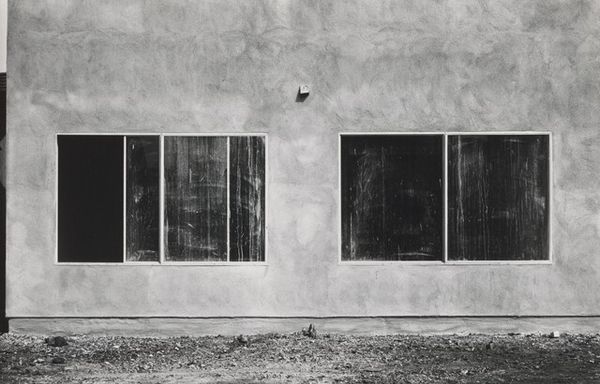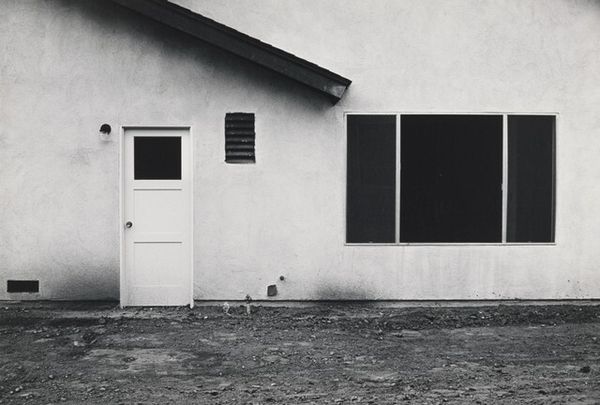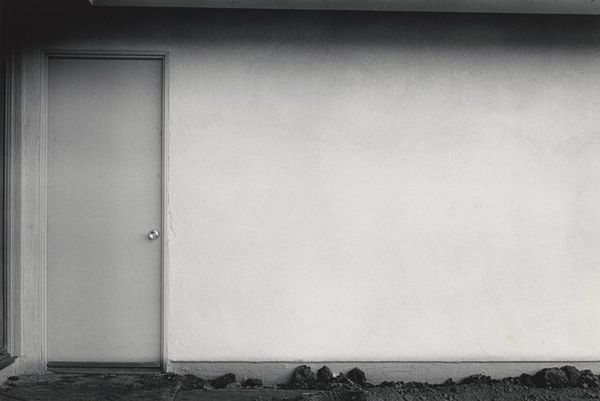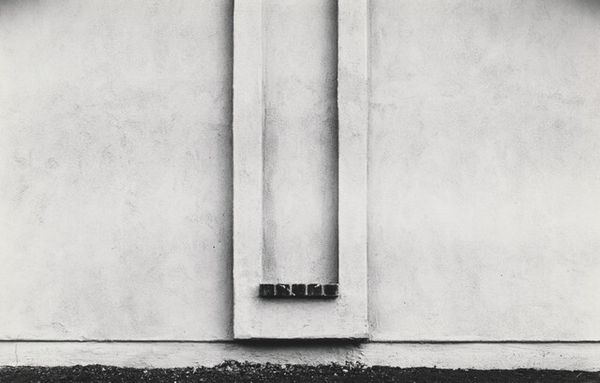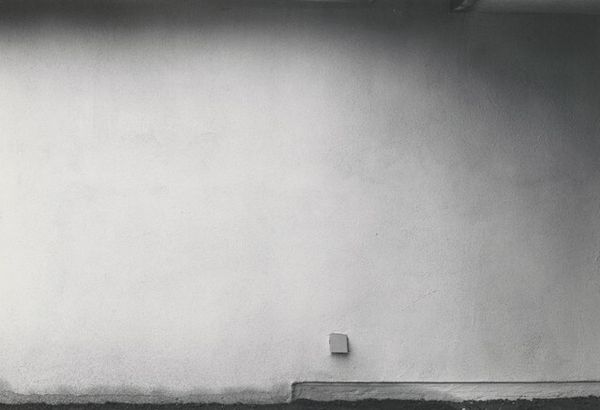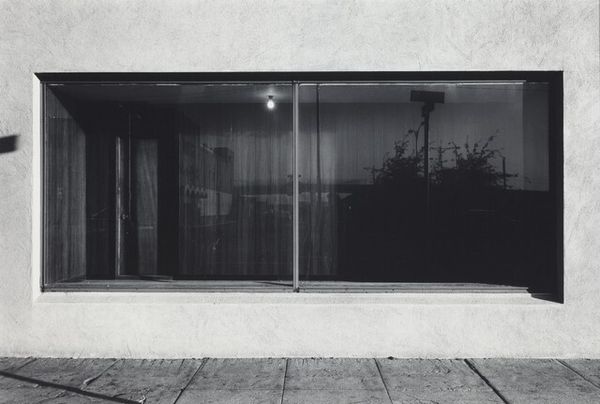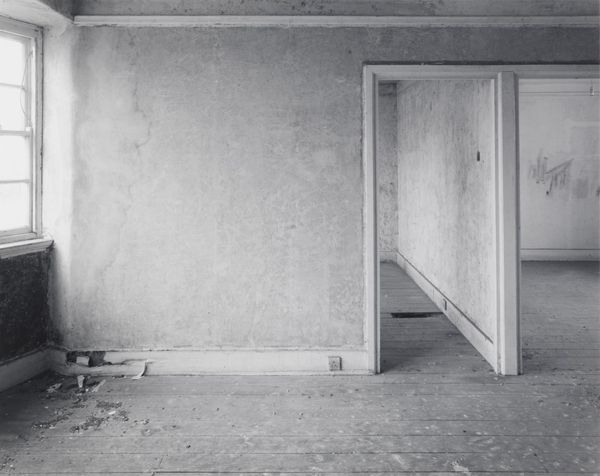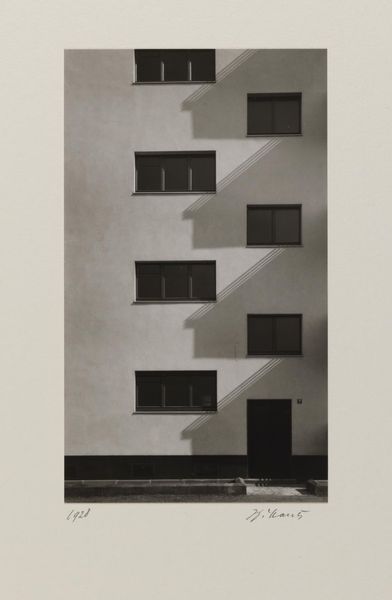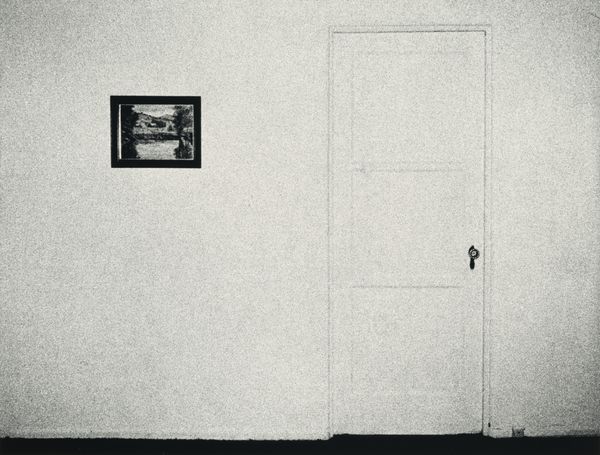
photography
#
conceptual-art
#
minimalism
#
landscape
#
street-photography
#
photography
#
monochrome photography
#
monochrome
#
hard-edge-painting
#
monochrome
Dimensions: image/sheet: 14.5 × 21.27 cm (5 11/16 × 8 3/8 in.) mount: 27.94 × 27.94 cm (11 × 11 in.)
Copyright: National Gallery of Art: CC0 1.0
Editor: Here we have Lewis Baltz’s “Tract House #5,” taken in 1971. It's a stark black and white photograph of what looks like the side of a very plain building. I'm struck by its…emptiness? What's your take? Curator: It's an image that challenges us, isn't it? Baltz, working in the 70s, captured the rise of suburban sprawl with an almost clinical detachment. Consider the social implications of these rapidly built "tract houses". What kind of lived experience do you imagine within them, judging from this external view? Editor: Cookie-cutter, maybe? Isolated? I guess it critiques the American Dream. Curator: Precisely. Think about the social commentary inherent in his minimalist style. By stripping away the aesthetic niceties, Baltz forces us to confront the potentially alienating nature of mass-produced housing. The hard-edge geometry mirrors a certain societal rigidity, don't you think? What philosophical ideas does the image evoke for you? Editor: Maybe a sense of existential dread? It's almost like a blank slate, devoid of personality. It does invite critical thoughts on housing and social structures. Curator: And its relevance persists, doesn't it? How might we view such an image in light of today’s discussions about urban planning, affordable housing, and even climate change? Editor: It makes you think about the bigger picture. What kind of world are we building? Curator: Exactly. Art can really act as an entry point into social issues, when used correctly. Editor: Thanks, that’s helped me see there's much more to this than first meets the eye. It’s interesting how seemingly simple art can ignite questions on important topics such as urbanism and social inequity.
Comments
No comments
Be the first to comment and join the conversation on the ultimate creative platform.
